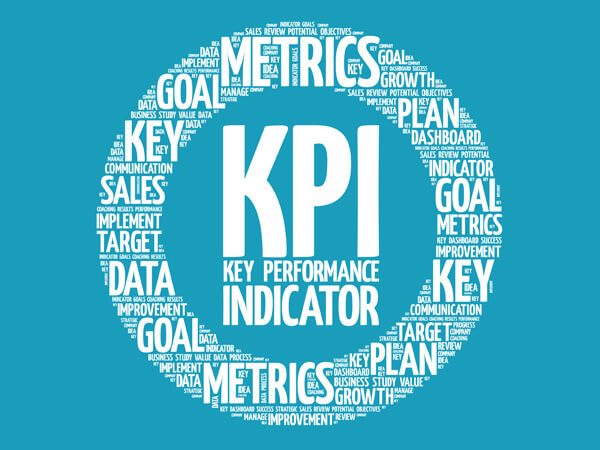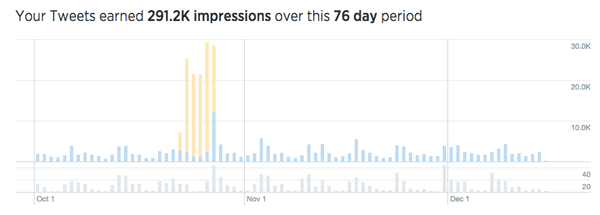Are you liable for reporting your social media outcomes?
Do it’s essential to develop a reporting system?
Understanding who you report back to and what metrics they want will provide help to streamline the method and make sure you’re delivering stories on time.
On this article you’ll uncover tips on how to develop a social media reporting system for what you are promoting.
#1: Establish Stakeholders and Objectives
Step one is to do a fast audit of your present reporting course of and discover out which stakeholders obtain your reviews. If whom you’re reporting to and why, you possibly can guarantee your experiences can be helpful to everybody concerned.
Discover out who receives the social media information in your group. You might ship stories to 1 particular person, however that particular person might then ahead them on to others. Additionally, totally different groups have completely different wants. For instance, a PR group could have totally different expectations than a community administration workforce.
Next, uncover what actions your stories help so that you don’t waste time reporting on metrics nobody makes use of. Discuss to the individuals you report back to, discover out their wants (and needs) and see what you possibly can study concerning the present state of your social media reporting. You’ll seemingly discover some overlapping objectives and be capable to determine areas of commonality.
In the event you’re the only proprietor and client of social media reporting in your organization, establish what it’s good to learn about your efficiency and what you’ll do with this data. Attempt to distill it to some clear objectives, which can make every thing simpler in later steps.
#2: Determine What Metrics to Monitor
When deciding what to incorporate in your experiences, discover metrics you should utilize in a number of conditions and have some enterprise profit to your stakeholders. Simply because you may report on one thing doesn’t imply you need to. And the extra metrics you embrace in your reviews now, the more metrics you’ll should preserve supporting sooner or later.
Right here’s an outline of the metrics that actually matter:
- Attain or publicity: Measure the scale of your potential viewers.
- Quantity: Observe the dialog measurement and variety of model mentions.
- Engagement: Analyze the amount and kind of engagement your accounts and posts get.
- Viewers: Study who participates in a dialog, together with essentially the most energetic customers and influencers.
- Content material: Monitor your top–performing (and worst–performing) posts.
The metrics you employ will rely in your needs and the social networks you’re measuring, however these core ideas are a fantastic begin.
Along with the final metrics above, you’ll most likely have a number of particular wants or requests from stakeholders you should assist. That’s nice, as a result of the extra related and focused your studies, the extra helpful they’ll be for what you are promoting.
Nonetheless, keep away from creating customized metrics or something you’ll have to calculate manually, except they‘re actually essential. You’ll seemingly remorse this later. It could possibly take a very long time to handcraft particular calculations, particularly should you’re not fully positive how you probably did it the final time.
Above all, be constant. Ensure you’re reporting the identical metrics in the identical means every time. Add in proportion modifications and different benchmarks to make it simple to your viewers to interpret the outcomes.
#3: Select the Proper Instruments
There are various social media measurement and analytics instruments you’ll be able to select from. Nevertheless, only some tools will enable you to get the exact data you want.
Take into account that no device goes to be precisely what you’re in search of. There are such a lot of methods to investigate social media that each instrument has a special perspective. Plus, social information is way from excellent and the form of info that you may pull from a selected social media channel will differ relying on the channel.
Nevertheless, there’s a product on the market for you.
Read more: 5 Marketing Automation Ideas: What to do with Your Contest Leads
Ask these questions if you’re researching a new software:
- The place does it get its social knowledge?
- What sort of relationship does it have with the social networks?
- Does it embody metrics on the networks you might want to report on?
- What kind of buyer assist or account administration does it provide?
- What options are on the product roadmap?
- How lengthy has it been round? What are its plans for the subsequent 2 to 5 years?
It’s vital to belief that the instruments you utilize are right here to remain, have entry to the very best-high quality social information and have a staff in place to verify your questions are answered and the product continues to evolve. Social media adjustments shortly, so the fitting instruments will develop together with the networks.
You’ll save time you probably have one instrument (or a number of instruments) that gives the information you want so that you don’t need to maintain switching from software to software. Moderately than use one product for every channel or want, discover a higher instrument (even when it prices slightly more) that may do most or all of this in a single place.
Do not forget that you typically get what you pay for with social media instruments. Free instruments are more likely to have much less dependable information than their charge-based mostly counterparts they usually might not be round at the moment subsequent year. There are a number of nice fee-based choices on the market, relying in your funds. The suitable instruments will prevent time, stress and energy, so the fee will completely be price it.
#4: Choose an Optimal Reporting Timeframe
Discovering the precise cadence for reporting might be powerful. It is smart to generate some experiences month-to-month, and others kind of typically. And also you’ll undoubtedly be requested for end-of-year experiences each December or January. So how will you meet all of those wants with out spending 40 hours every week creating reviews?
Most metrics don’t have to be reported on weekly. If somebody is asking you for weekly studies, dig somewhat deeper into the request.
What are the stakeholders truly searching for? Possibly they wish to know the top posts for the week to allow them to see whether or not a brand new marketing campaign is working or a product launch was nicely-obtained. If that’s the case, you possibly can most likely reply these questions rapidly with out producing a full report. Or possibly you’ll be able to decide to a smaller weekly report that features a few highlights to reply key questions.
Month-to-month experiences are fairly typical and one of the helpful time intervals for social media reporting. They clean out among the particular person each day spikes and let folks see how issues are going month to month. In addition they present extra perception into seasonal patterns than weekly experiences do.
For instance, as a result of Thanksgiving is on a unique date annually, stakeholders can extra rapidly perceive the seasonality of the metrics with a comparability of your complete month (moderately than the week of November 22-28) from this year to the earlier year.
#5: Take into account Special Requests
It’s possible you’ll get requests from stakeholders for information that doesn’t make a number of sense. You don’t at all times must honor these requests, at the least not precisely how they’re requested.
Consider carefully about what the stakeholders are asking for and search for one thing you already measure that may reply the query. You probably already do one thing comparable, however possibly not in the way in which you’re being requested. See when you’ve got present options earlier than committing to one thing new.
However what if the request is from somebody essential and it’s a customized report that’s completely distinctive? That’s as much as you. Some customized stories must be honored. For instance, you most likely can’t say no to your CMO. However possibly you need to use this request as an alternative choice to an current report, and even present some schooling on what you possibly can and may’t do.
Then again, if it’s an fascinating or helpful request, possibly you need to use it for different issues later. Attempt to be considered in what you conform to, as a result of when you open that door, you could by no means be capable to shut it once more.
Conclusion
In case you work in social media advertising, you most likely spend appreciable time reporting in your outcomes. With a social media reporting system, you’ll be able to streamline this course of. To do this, assess your present state of affairs, make sensible selections about tools and metrics and be selective about the way you report to any extent further. You’ll thank your self in a couple of months!
Read more: Why Social Media Listening is Key to Your Marketing Strategy







